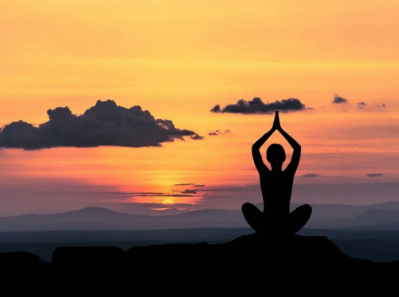How the Body Responds to Sunlight in Winter: The Role of Suryanamaskar

Introduction
Winter mornings have a different kind of silence, don’t they? The world outside is still, the sunlight feels slow to arrive, and we all love to have just five more minutes under the blanket.
It is comforting, but also tricky. The same warmth we crave from the blanket is the warmth our body is trying hard to create on its own.
In winter, your body works overtime to keep you warm. No one talks about it enough, but you can help your body make its own heat naturally through movement and breath. That is why, in this blog, let us explore how we can do this through small and simple habits, movement, and especially through Surya Namaskar.
Why do we feel so cold during winters
When the temperature drops, your body shifts into what you could call energy preservation mode. It tries to keep your core warm by limiting blood flow to your limbs. As a result, you feel sluggish and tired.
You might notice that your digestion slows down, your mood dips, or that you are just not in the mood to move. That’s your body’s way of asking for a little warming up from the inside.
So, the best way to do that isn’t with another cup of chai but with movement that builds inner heat.
Surya namaskar: Body’s natural heater
You have probably heard of Surya Namaskar. Maybe you have even tried it a few times. But, during winters it can make a huge difference.
Suryanamaskar beautifully incorporates your breath into movement, and this process warms every muscle and joint in your body.
Each round increases circulation, gently raises your heartbeat, and spreads heat evenly through your system. Think of it as building that heat inside yourself that sustains you through the day.
Here’s what happens when you practice it regularly in winter:
- Your blood starts flowing freely again, carrying warmth to your cold fingers and toes.
- Your metabolism wakes up, which means you digest better and feel lighter.
- Your lungs fill with fresh air and oxygen clears the fog and lifts your energy.
- Your mind feels sharper, calmer, more alive.
The science behind the warmth
When you move through Surya Namaskar, your muscles contract and stretch rhythmically. This movement generates heat (what physiologists call thermogenesis). At the same time, the breathwork involved, inhalations and exhalations, bring in oxygen that fuels this heat production.
So, our internal temperature rises slightly, improving circulation and keeping your body’s thermostat balanced even when it’s freezing outside. That’s why instead of fighting the cold, your body learns to flow with it.
How to add Surya Namaskar to your busy morning routines?
To begin with, you absolutely don’t need to be a yoga expert. Just start with a few sips of warm water. Sit for a moment, breathe.
Then begin with just three rounds of Surya Namaskar. Inhale as you stretch up, exhale as you fold forward. Feel your heartbeat rise, your palms grow warm, your breath steady.
If you are looking for motivation, try searching for Free Yoga Near Me on google, because interacting with like minded people makes it easier to stay motivated. And if you’re in Uttar Pradesh, there are wonderful Yoga Classes in Gurgaon that offer morning Surya Namaskar series during winter. Being guided by a teacher ensures your postures are right and your energy stays balanced. Over time, this tiny ritual becomes a habit in the long run.
Final Thoughts
Winters can feel grounded, peaceful, even warm too. If you help your body do what it already knows how to do – stay warm, stay alive, stay flowing, then we can flow through the cold weather twitch ease.
Surya Namaskar teaches your body to generate heat when the world around you goes cold, to find warmth from within instead of always searching for it outside. So tomorrow morning, before you reach for that extra blanket, roll out your mat instead. Move slowly and breathe deeply.



